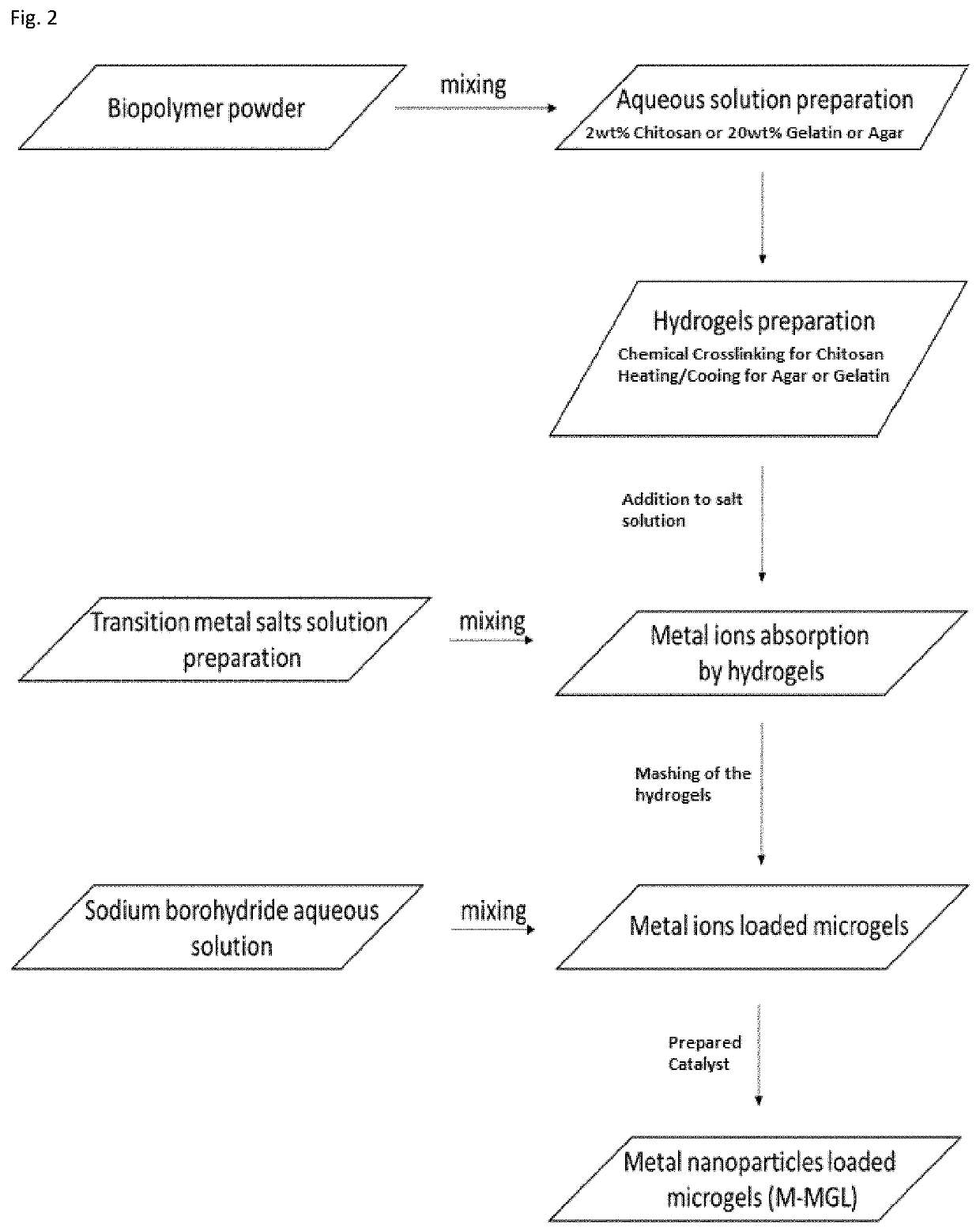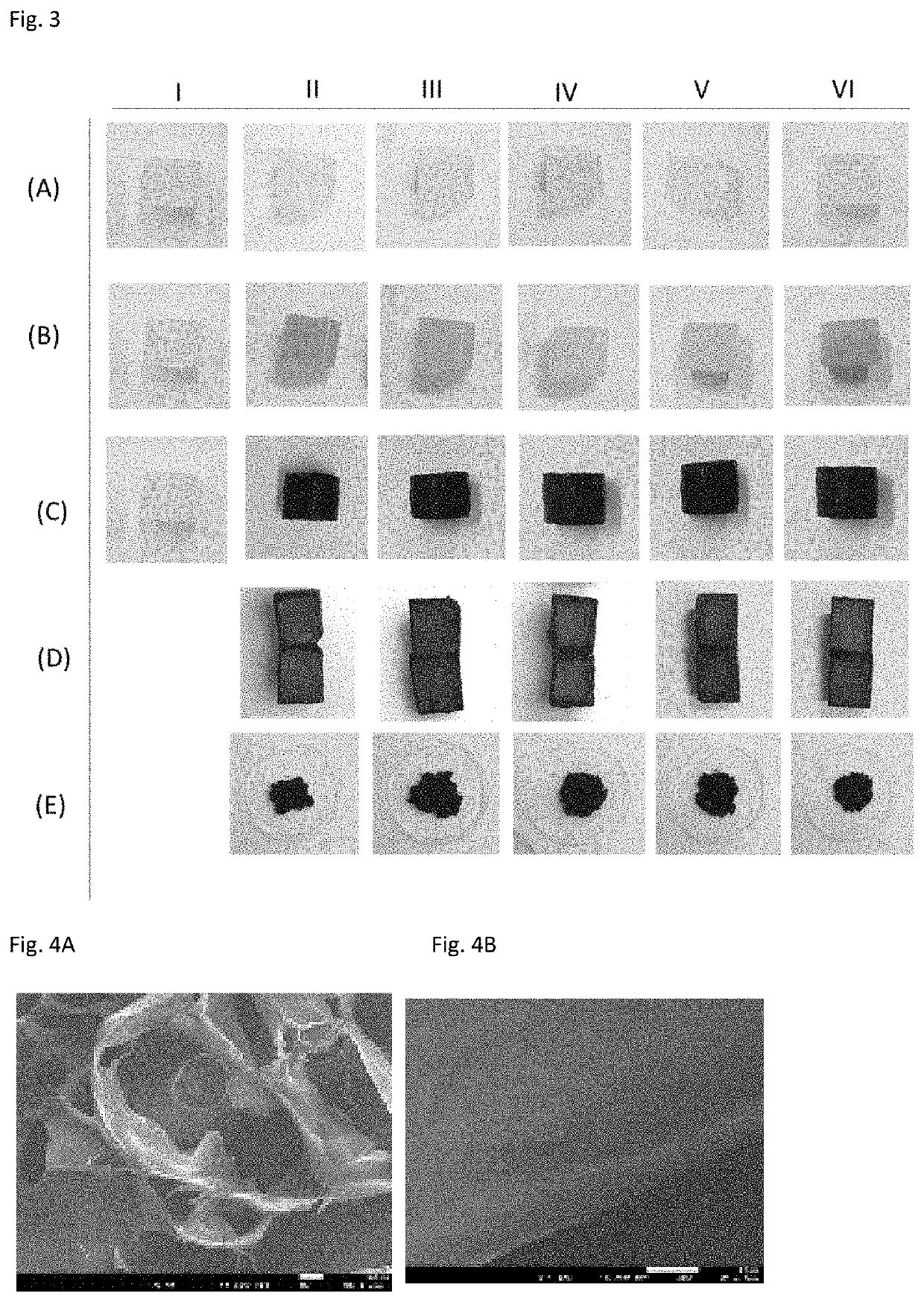Method of reducing an organic pollutant in contaminated water
a technology of organic pollutant and biopolymer, which is applied in the direction of water treatment compounds, water/sludge/sewage treatment, water contaminants, etc., can solve the problems of small nanoparticle size, difficulty in separation and recycling when used in batch reactors, and non-uniform pressure and mass transport. achieve the effect of reducing the transition metal
- Summary
- Abstract
- Description
- Claims
- Application Information
AI Technical Summary
Benefits of technology
Problems solved by technology
Method used
Image
Examples
examples
Materials
[0087]The materials used in the current experimental work were methylene blue dye (C16H18ClN3S, 99.9%), 2,6-dinitrophenol ((O2N)2C6H3OH, 95%), methyl orange (C14H14N3NaO3S, 99%) hydrazine hydrate (N2H2, 50-60% in H2O solution), These chemicals were purchased from BDH chemicals, Poole, England. Silver nitrate (AgNO3, 99%), 4-nitrophenol (C6H5NO3, 98%), 2-nitrophenol, cobalt chloride hexahydrate (CoCl2.6H2O, 98%), copper sulfate pentahydrate, iron nitrate, nickel nitrate, acetic acid, and hydrochloric acid were purchased from Merck and Sigma Aldrich. Gelatin derived from bovine skin (Type B, bloom 250, pH 5-5.5) was purchased from Shanghai M. Biochem Co., Ltd. Agar and agarose were purchased from Japan. Chitosan (high molecular weight) was purchased from Sigma Aldrich. All the chemicals were used without further purification. De-ionized water was used throughout the experiments.
Preparation of Hydrogels
[0088]Chitosan hydrogel was prepared by first chitosan dissolution in acidi...
PUM
| Property | Measurement | Unit |
|---|---|---|
| size | aaaaa | aaaaa |
| pore size | aaaaa | aaaaa |
| particle size | aaaaa | aaaaa |
Abstract
Description
Claims
Application Information
 Login to View More
Login to View More - R&D Engineer
- R&D Manager
- IP Professional
- Industry Leading Data Capabilities
- Powerful AI technology
- Patent DNA Extraction
Browse by: Latest US Patents, China's latest patents, Technical Efficacy Thesaurus, Application Domain, Technology Topic, Popular Technical Reports.
© 2024 PatSnap. All rights reserved.Legal|Privacy policy|Modern Slavery Act Transparency Statement|Sitemap|About US| Contact US: help@patsnap.com










